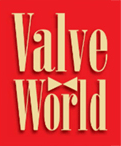Servomex, a leader in gas analysis, has announced a breakthrough in light hydrocarbon gas analysis with the launch of the new SERVOTOUGH SpectraScan. A real time optical analyser utilising the Precisive field proven optical bench, the SpectraScan offers a breakthrough capability in the continuous analysis of light hydrocarbons C1-C5+.
Seen as a faster, less complex and more reliable technology than the gas chromatograph techniques traditionally used in light hydrocarbon applications, the SpectraScanis a genuine game-changer in gas analysis. With an innovative measurement technology using NIR/IR absorption spectroscopy with state of the art spectral scanning coupled with chemometric based data processing,the SpectraScan delivers exceptionally high accuracy, low cross sensitivity and a very fast speed of response.
A flow-through cell utilises a patented spectrometer design for a high quality optical measurement, resulting in a high signal-to-noise ratio which givesa highly stable and accurate measurement. No separation columns and valves are required Hydrocarbon infra-red spectra are broad, with the wavelength of different elements heavily overlapping. The SpectraScan achieves a precise separation into constituent components by utilising an advanced Tunable Filter Spectroscopy Analysis Algorithm. Optimised with cross interference modeling, spectral non-linearity compensation and peak shifting compensation, this breakthrough Chemometric algorithm delivers industry-leading interference compensation with a permanent span calibration, low cross-interference (< 0.2%), high baseline stability and a linear response throughout the scanning range. Wavelength scanning is achieved by custom designed tunable band-pass filter, with a unique design that enables simultaneous scanning of selected wavelength bands for gases including Methane, Ethane, Propane, iso-Butane, n-Butane, Propylene and Ethylene.
The SpectraScan also delivers a range of auxiliary cost and operating benefits. Manufactured to a robust and reliable design, the instrument’s optimised design produces very low zero and span drift, with minimal validation times. A fixed hardware configuration means maintenance costs are low, while the infra-red technique requires no carrier gas and consequently has minimal installation infrastructure requirements.

